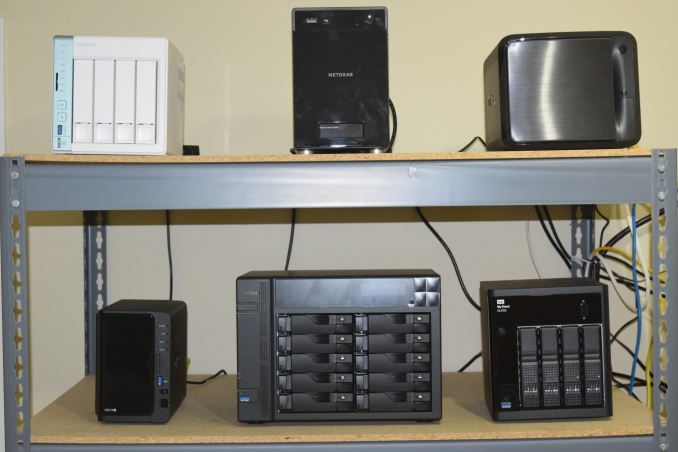Commercial NAS Operating Systems - A Comprehensive Overview of Core Features
by Ganesh T S on November 14, 2016 8:30 AM ESTSetting the Stage...
As we draw the first part of our comprehensive coverage of commercial NAS operating systems to a close, it is important to touch upon one additional core aspect. The setting up of multiple users, user groups, joining domains etc., LDAP or NIS authentication etc. are very important for business NAS units, but, not so much for NAS units targeting the home market.
Since the COTS NAS operating systems are all based on Linux, adopting the standard user / group strategy is not very difficult for the vendors. ZyXEL, as expected due to their targeting of home users, has only very basic user and group settings with quota support. Western Digital goes a bit further by allowing for multiple users to be created at the same time. Asustor, QNAP, and Synology have that feature and much more too. For example, Synology even supports 2-factor authentication for certain groups. Netgear does support some advanced features like Active Directory, but there are lots of things that Netgear could learn from the aforementioned vendors.
Today's piece dealt with the core aspects of NAS operating systems - storage and how it is configured, the user interface, setting up of the desired services and shared folders, and the configuration of the network links. Even though the coverage has been very subjective, there are some clear areas for each vendor to improve.
Asustor, QNAP and Synology have the setup process nailed down to a decent extent. However, Netgear needs to make its ReadyCLOUD process more robust. Alternatively, the RAIDar program should be fixed to avoid Java requirements. Western Digital's approach is almost perfect, given that they mostly sell systems with disks pre-installed. However, it would be good if a volume is created by default when the My Cloud OS is installed. ZyXEL's approach is passable, but the slow web UI leads to an unsatisfactory UX.
On the storage and services side, Synology and QNAP turn out to very feature-rich, followed closely by Asustor. Netgear still has some catching up to do as certain aspects like advanced SMB options still require an external package to be installed.
In terms of networking features, QNAP is very much on top. While all vendors have some sort of teaming implementation, QNAP has gone beyond that and started to implement various network modes that can really take advantage of the multiple LAN ports.
Next week, we will have a follow-up article that deals with value-add features. These include media services, surveillance (DVR for IP cameras) solutions, and the public cloud (integration with Dropbox, Google Drive etc.). We will also discuss support for virtualization - in terms of being a datastore, as well as the NAS being a host for guest VMs. A look at some of the third-party applications and the usage models that they enable will round up our comprehensive coverage of NAS operating systems.











103 Comments
View All Comments
bobthedino - Monday, February 13, 2017 - link
The article states "Apple users need to enable AFP", however since version 10.9 of macOS the default file sharing protocol is SMB (see: https://support.apple.com/en-gb/HT204445). Macs also support NFS out of the box.darwinosx - Monday, April 3, 2017 - link
Correct and Synology at least supports this pretty well.This isn't a bad article but its pretty clear the author doesn't have extensive NAS/OS experience and did not research very well.
florajames060 - Wednesday, January 27, 2021 - link
Thanks for the good post. I came to know more information about using the Printer. Recently I got impressed with the site name https://www.epson-printers.org/. It was very much useful for me to enhance my printing work.